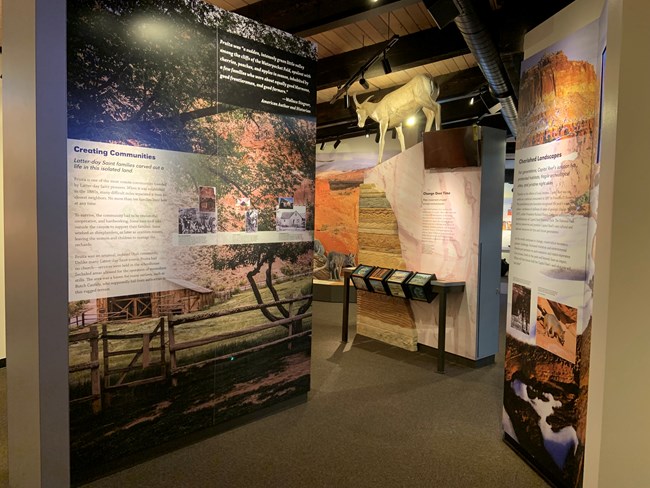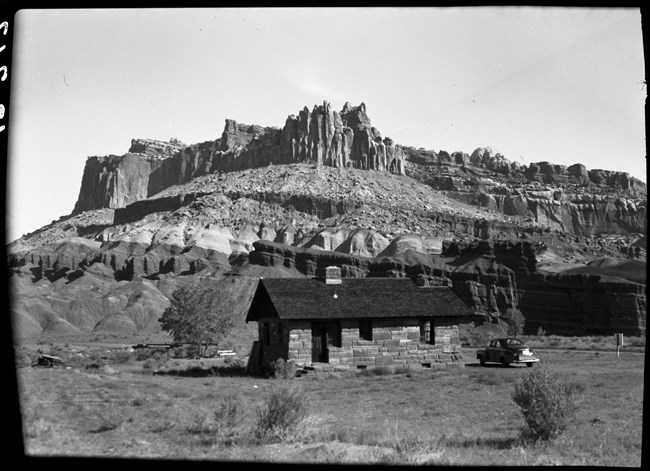|
Many visitors start their visit to any national park at the visitor center. These buildings contain a wealth of information, from rangers to answer questions, to exhibits to learn more about the park, to the bookstore to buy informational material and souvenirs. Over the decades that Capitol Reef has been part of the National Park Service, the visitor center has undergone many changes, but has always provided information and help to people. 
NPS Photo Recent Renovations and New ExhibitsThe new visitor center exhibits interpret the park's human history, diverse plant and animal life, and the iconic geology of the Waterpocket Fold. Through photographs and text, interactive features, and videos, visitors come away with a greater understanding of the significance of Capitol Reef National Park. 
NPS Mission 66 Visitor CenterMission 66 was an initiative to make parks more accessible by the National Park Service’s 50th anniversary in 1966. Private land in the Fruita area was acquired to complete the new State Route 24 and entrance to Capitol Reef National Monument within the Fremont River corridor. 
NPS/Natt N. Dodge, Charles Kelly, and Paul R. Franke Civilian Conservation Corps Ranger StationEven though Capitol Reef became a national monument in 1937, there were no official park buildings until 1940, when the Civilian Conservation Corps (CCC) built the first ranger station from sandstone quarried near Chimney Rock. It is a classic example of the rustic style of architecture produced by the NPS during the Great Depression. |
Last updated: January 10, 2023
